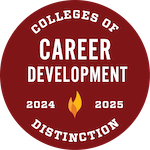Your Resume, Your Opportunity
Your resume is your personal highlight reel—it is your chance to grab attention and land an interview for the role you want. It is not about listing everything you have ever done but about being intentional and showcasing what makes you the best fit.
The best resumes are never one-size-fits-all—they are designed precisely for the opportunity you are pursuing. Most recruiters only spend 30 seconds or less reviewing resumes, so yours needs to be clear, concise, and tailored.
We recommend creating a professional inventory of your skills, experiences, and accomplishments to build a resume that focuses on what’s most relevant to the position and gets you noticed!






